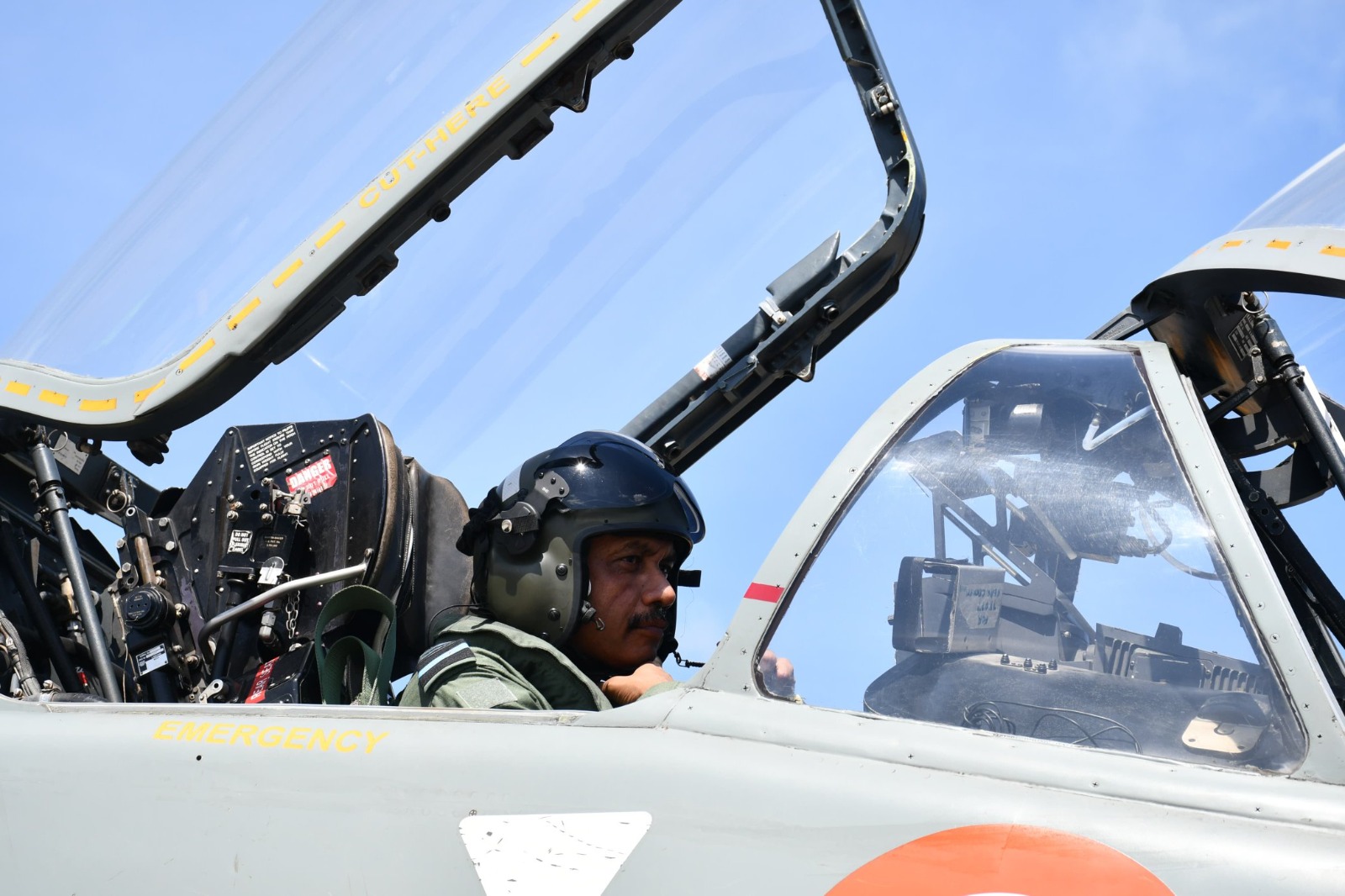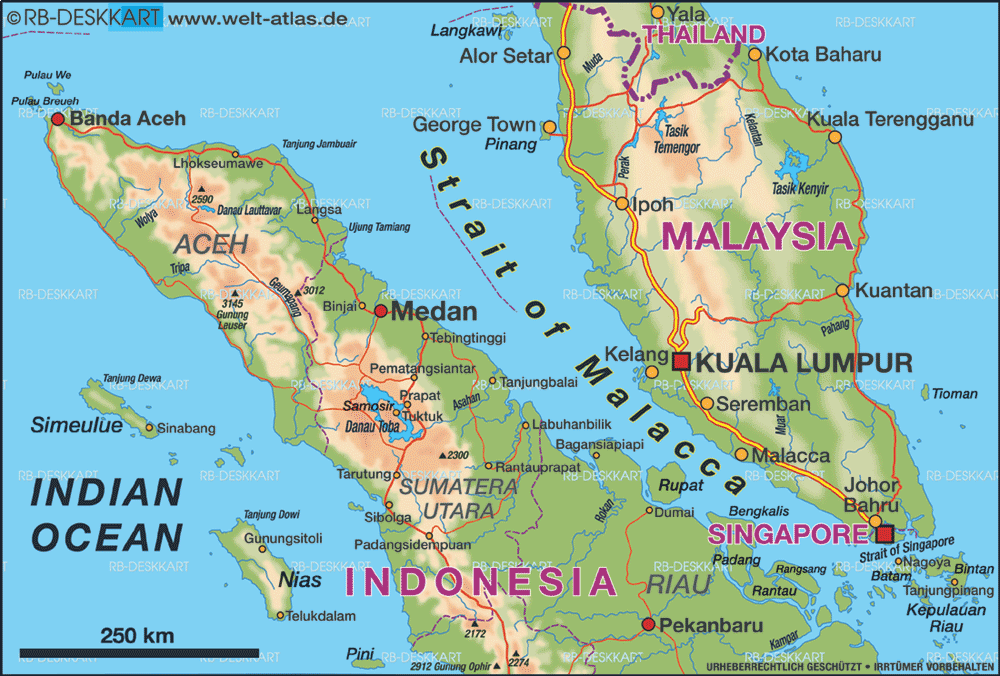With an eye on China, Indian Air Force’s (IAF) ‘Dragons’ Jaguar Maritime Strike fighter jets took part in a tri-service exercise in Andamans and Nicobar to demonstrate the application of air power in the isles sitting on the entrance to the Indian Ocean Region (IOR) close to Malacca Straits, the chokepoint of China.
The Island chain comprising 572 islands is emerging as an essential piece in India’s strategy to balance China’s burgeoning dominance in the Indo-Pacific.
Over the past decade, the Chinese Navy’s surface ships and submarines in the Indian Ocean have become ubiquitous with their presence.
In light of this, India has already set on the path of developing the military assets on the archipelago of Andaman and Nicobar Islands, which sits on the mouth of the Strait of Malacca, a gateway to the South China Sea and a significant choke point for the Chinese Navy.
The Andaman Nicobar Command, the only tri-service theatre command of the Indian armed forces, is conducting a massive inter-force wargame ‘Exercise Dweepshakti-23’. The IAF’s No. 6 Squadron, ‘The Dragons,’ operates from the strategic Car Nicobar base and carries out a maritime strike mission showcasing the strategic application of airpower in the vicinity of Andaman and Nicobar Islands.
The Indian Army, Navy, Air Force, and Coast Guard are participating in the exercise to validate operating procedures and assess the command’s operational capabilities.
The exercise is seeing a major convergence of the air assets of the IAF. The IAF’s A-50 Phalcon Airborne Warning, Control, and Command System and the frontline Su-30MKIs carried out a long-range deep strike drill from the Islands.
“During Exercise #DweepShakti Air Marshal Saju Balakrishnan, #CINCAN or Commander in Chief of the Andaman and Nicobar Command, takes the lead, flying a maritime strike mission on Su-30MKI. A strategic move against a simulated adversary in Command’s southern AoR (area of responsibility),” the Andaman and Nicobar Command said on X.
Located at the confluence of the Indian and Pacific Oceans, the Andaman and Nicobar Islands are said to be one of the world’s most strategically located island chains.
The northernmost point of the 572 islands is only 22 nautical miles away from Myanmar, and its southernmost point is a mere 90 nautical miles from Indonesia. The islands control the Bay of Bengal, the Six Degree, and the Ten Degree channels, which over 60,000 commercial vessels use.

The Indian government is developing the islands’ military assets as part of a 10-year infrastructure development. The Campbell Bay (INS Baaz) runway in the south will be extended to 10,000 feet to support operations by larger aircraft. Another 10,000-foot runway is planned at Kamorta.
India has been deploying its Sukhoi Su-30MKI and Jaguar Maritime fighter jets in the islands. The Indian Navy’s Poseidon submarine hunters P-8Is also operate from here. The military infrastructure development is to enable the permanent deployment of these assets from here.
Besides military assets, India is also developing civilian infrastructure in the islands. A trans-shipment hub planned in Campbell Bay will be close to the Malacca Strait and the East-West shipping route connecting Europe and Africa with Asia.
Its proximity to Bangladesh, Thailand, Myanmar, and Indonesia also gives it a further advantage. Most recently, India inaugurated the Chennai-Andaman and Nicobar undersea internet cable to provide a high-speed internet connection to seven remote island chains.
Quads Stakes In The Archipelago
The naval vessels of partner countries often make a pit stop in the Andaman and Nicobar Islands before entering or exiting the South China Sea. Recently, HMS Spey, a naval vessel of the Royal Navy, made its maiden port call to Port Blair to go through the Straits of Malacca, a narrow stretch of water located off Southeast Asia connecting the South Pacific and the Indian oceans.
“For our inaugural visit to India, we visited Port Blair, the capital city of Andaman and Nicobar Islands, an Indian territory in the Bay of Bengal. Having conducted maneuvers with the Indian Navy, we had the opportunity to explore the Island’s rich culture and diversity,” the HMS Spey’s X handle reads.
During its deployment, the Commanding Officer of HMS Spey and British Defense Attache called on CINCAN Air Marshal Saju Balakrishnan.
An Indonesian warship also visited Port Blair for joint patrols to increase inter-operability.
The Quad countries and France have been working with India to develop Andamans and Nicobar to answer China’s increasing footprint in the surrounding waters.
Chinese submarines coming to the Indian Ocean are forced to surface in Malacca Strait because it is narrow.
Considering only 37 islands out of 572 are inhabited, calls for beefing up security measures around the islands have only increased.
There have been reports that India will be installing the Japan-US “fishhook” SOSUS (Sound Surveillance System, a chain of sensors designed to track submarines), creating a counter-wall against Chinese submarines loitering in the Andaman Sea and deep South China Sea.

It will be a crucial collaboration, as it is said that once up and running, Japan will share intelligence with the United Kingdom, Australia, and India.
“The main driver for these developments is undoubtedly the Chinese naval presence in the Indian Ocean. There has been a surge of anxiety in New Delhi over the recent deployment of PLAN submarines in the IOR.
“Indian observers suspect that in the guise of anti-piracy missions, Chinese subs have been collecting vital information about the underwater operating environment in the sub-continental littorals,” a former Indian Navy chief Admiral Karambir Singh (Retired) told the EurAsian Times.
- Ritu Sharma has been a journalist for over a decade, writing on defense, foreign affairs, and nuclear technology.
- She can be reached at ritu.sharma (at) mail.com
- Follow EurAsian Times on Google News




